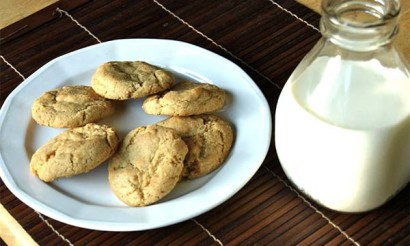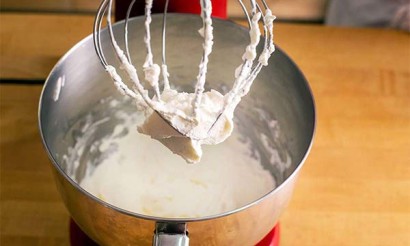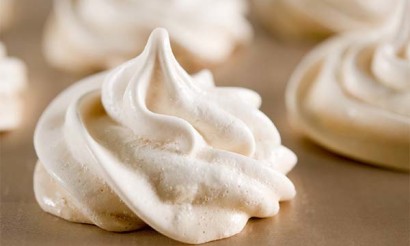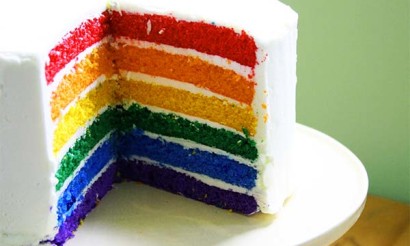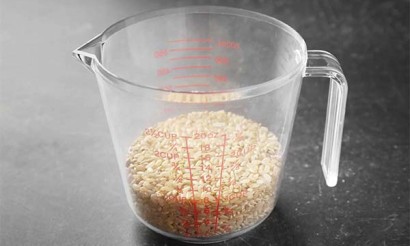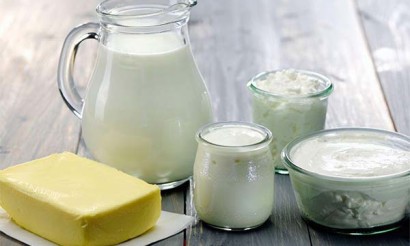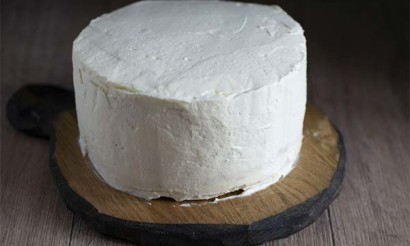How to properly carbonate baking soda: useful tips
Fluffy baked goods - the goal of any responsible housewife who wants to prepare a variety of delicious products from flour. Yeast dough rises due to the byproducts of yeast fungi - carbon dioxide. Yeast processes sugar and, in the absence of the latter, breaks down starch. The carbon dioxide accumulates in the protein substance of the flour. When the mixture is sufficiently accumulated or heated, the bubbles grow in size and rise up with the mass (i.e., the dough is suitable).
- A little bit about baking soda.
- The cause and process of baking soda interacting with acid
- Variations on the theme of carbonation
- Vinegar substitutes
- Dough with sour milk ingredients
- Baking powder
- Recipes
- Fluffy pancakes
- Dairy Pancakes with Soda
- An interesting way to bake without yeast with baking soda and vitamin C
- Recipe for All-Purpose Lenten Dough
- Apple pie with a crispy crust called charlotte
There is a portion of people who prefer to use baking soda for this purpose. To achieve the desired result, they mix sodium bicarbonate with vinegar. However, there are certain rules that allow you to get the proper quality dough and with a minimum monetary investment. There is also a leavening agent (so-called baking powder), sold in stores. Any housewife can easily make a leavening agent from simple ingredients (the main one is baking soda) at home.
A little about baking soda
Types of soda:
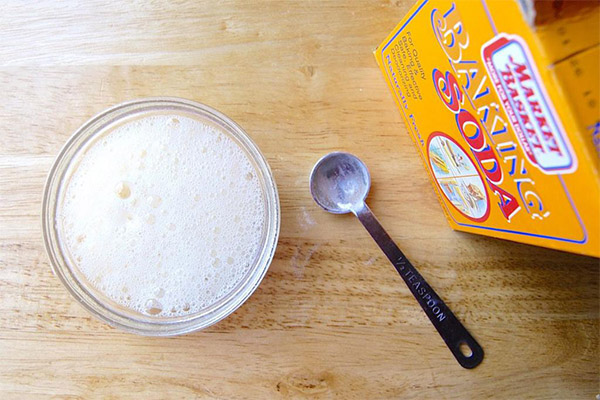
- Food-grade, bicarbonate, potable, or sodium bicarbonate (NaHCO3).
- Calcined or sodium carbonate (Na2CO3).
- Caustic or sodium hydroxide, caustic lye, caustic soda, caustic (NaOH).
- Crystalline or washing soda (Na2CO3 x10H2O).
Baking soda is an excellent leavening agent for dough. You can't do without it in cooking, medicine, household and other spheres.
Soda was once extracted from seaweed or ash. It has been used in baking since ancient times. Archaeologists have found soda in caves from the first to second centuries B.C. It was already used in ancient Egypt.
Soda is a popular additive (E500) used in the food industry:
- As a stabilizer - in condensed milk (300 mg/kg).
- As a leavening agent (main or additional) - in cookies (mg/kg - not limited).
- As a stabilizer to reduce acidity - in cocoa powder (mg/kg - not limited).
The cause and process of interaction of baking soda with acid
So how does baking soda make dough products crumbly, friable, airy? The answer to this question can be given by considering the following reactions:
- The reaction of interaction with acetic acid: NaHCO3+CH3COOH=CH3COONa+CO2+H2O
- The reaction of decomposition of soda when exposed to elevated temperatures (from 60-200°C): 2NaHCO3=Na2CO3+H2O+CO2
In the first reaction, the interaction of acetic acid with soda produces salt (sodium acetate), carbon dioxide (rapid foaming can be observed) and water.
The whole point of the process is to produce a large number of gas bubbles. The latter must:
- evenly distribute themselves in the dough;
- ensure lightness, porosity of the finished product.
Soda alone will not be an excellent leavening agent, because the decomposition reaction gives carbonate, which gives a soapy flavor. The reaction itself is incomplete, so the desired friability of the dough is not achieved.
Variations on the quenching theme
Not everyone knows how to properly carbonate baking soda and vinegar. Let's consider common methods of using baking soda when making baking dough.
In a special large spoon, you need to take some amount of baking soda powder and pour table vinegar on top. There is a rapid effervescence of the mixture, which must then be poured into the dough. But this process must take place in the dough of the future product, so that the bubbles are distributed within it, rather than flying off into the air. Why is there still some effect observed? Since the amount of vinegar and baking soda is taken by eye, there remains a powder that has not reacted with the acidic environment. It is he who continues to decompose already in the dough under the influence of high temperature or acidic components.
The baking soda powder can also be added to the liquid ingredients mixture (where the vinegar is also added) and stirred well. In this case, the carbon dioxide, although not completely, remains in the dough.
The correct way to carbonate the baking soda:
- Mix the baking soda with the flour and other dry ingredients of the dough mixture.
- Stir together the liquid ingredients. Pour in the vinegar.
- Only then should the dry and liquid ingredients be mixed together. Intensively knead the dough, form the products and bake them.
This method allows you to keep the carbon dioxide inside the dough.
But this is not all. For a successful result, it is very important to know the exact proportions, so that the carbonation of baking soda goes to the full extent. Usually the proportions are specified in the recipe. It is not unreasonable to recall that 1 tsp of baking soda is 12 grams. To extinguish that amount completely, you need to add 4 tsp. of 9% vinegar. Exceeding the amount of acid leads to negative consequences, which affect the quality (taste, consistency) of the dough. For a glass of flour, it is recommended to take no more than 0.25 tsp of soda.
Vinegar Substitutes.
The following products can be used for carbonation:
- Apple cider vinegar, wine vinegar, balsamic vinegar.
- Berry (citrus) juices. Soda and lemon juice should be taken in a ratio of 1:6.
- Sour-milk products.
- Honey. Honey, although sweet in taste, has a high level of acidity (added to the liquid components of the dough).
- Boiling water. Boiling water is quenched when nothing is on hand. In this case, there is a reaction of thermal decomposition of sodium bicarbonate and the release of coveted gas bubbles. You need to pour sodium bicarbonate into the dough, pour boiling water over it, stir everything quickly and bake.
You should not use concentrated acetic acid. It is necessary to dilute it in advance in the proportion 1:7, so that you get 9% vinegar. You can also take citric acid (E330). The ratio of baking soda to crystalline citric acid is 1:1. So, for pancakes, knead the batter, dissolve in separate cups of baking soda and lemon juice (just not in boiling water), at the same time pour in, stir and bake.
Dough with sour milk ingredients
When sour milk products are taken as the main part of the dough (or as an additive), carbonation of soda with acetic acid is not required. This applies primarily to pancakes. Here, too, it is necessary to adhere to the proportions, so that there is not an excess of baking soda. For 1 cup of sour milk component take 0.5 tsp of baking soda powder. When kneading the dough, the same basic principle is used: dry ingredients (soda, flour, sugar, salt, and so on) are quickly mixed with liquid ones (kefir/sour cream/prostevash, eggs, water, and the like). Dairy ingredients are preheated a little beforehand.
Baking Powder
When we go to the store, we buy everything we need. And when we return home, we find that such a small thing as leavening agent, we forgot to buy. So it's worth making it yourself ahead of time, using 3 basic ingredients, an electronic scale, dry cookware and your desire. Baking powder is used to make dough products tasty, puffy and beautiful. Our grandmothers used baking soda, but it gives an unpleasant smell and taste. And we need the dough to be beautiful, tasty, flavorful, which requires a leavening agent.

One of the main components is flour, but starch can be used instead. It prolongs the life of the powder, because flour quickly clumps. The main thing is that the utensil should be dry, and the product should be stored in a dry, well-ventilated place. It should be taken with a dry spoon. If the ready powder is crumpled, you need to add a few cubes of raffinate to it, it will absorb the excess moisture. The shelf life of the powder on starch is one and a half months. If flour will be used in the composition, no more than 3 weeks. For excellent powder quality, it is necessary to grind the citric acid in a blender. It is desirable that all ingredients have the same dispersion. If water gets into the baking powder, a reaction will start, which is not necessary before time.
Soda keeps for a long time, but baking powder keeps for a few months at most. This is because the components of the powder gradually begin to interact during storage, thereby losing precious carbon dioxide. To check the shelf life, you need to put a spoonful of the mixture in a glass of water. If there is a violent reaction, then the quality of the powder is still proper.
The required ingredients:
- baking soda - 30 g;
- Citric acid ground in a coffee grinder - 18 grams;
- starch - 72 g.
The main thing in the preparation of the leavening agent is accuracy. The more accurate weigh all the ingredients, the better the baking will be. You need to combine citric acid, baking soda and starch, mix well. The starch plays the role of a filler. It happens that hostesses use only baking soda and citric acid for baking powder, but the shelf life of such a powder is not more than two weeks. When using 2 ingredients, their ratio should be one to one. Baking powder should be added along with the flour when making the dough. There are some recipes where the flour is added in 2-3 steps. In this case, the addition of baking powder should be made in the last step.
When the dough has additional sour agents (cottage cheese, sour cream, kefir, whey, yogurt, honey, fruit and berry juices, puree, and so on), you need to add on the tip of a knife more soda. This is required so that the alkalization of these products occurred, the reaction went better, and the dough was more fluffy.
To summarize
- The result of the vital activity of yeast fungi and the process of interaction of the acidic environment with sodium bicarbonate is the release of carbon dioxide (gas) bubbles, which raise the dough, giving it a puffiness and porosity.
- The products of the interaction of soda with acetic acid are an organic salt (sodium acetate), water and carbon dioxide.
- Mixing baking soda with an acidic medium outside of the dough is a big mistake, because most of the carbon dioxide simply escapes into the air.
- The most correct way to carbonate baking soda is to combine all the pre-prepared dry ingredients (including baking soda or leavening agent) with the liquid ingredients (including acid), stir vigorously, and bake the finished product.
Importance of proportions.
Acetic acid can be replaced with many things. It can be fruit, wine vinegar, berry (citrus) juices, sour milk ingredients, honey, boiling water (as a last resort) and crystallized citric acid.
The leavening agent or baking powder can easily be made yourself. To do this, you need to mix 30 g of baking soda, 72 g of starch, 18 g of citric acid.
Recipes
Fluffy pancakes
Prepare delicious fluffy kefir pancakes that are very easy to make. Best of all, they won't fall over after frying, even when cold.
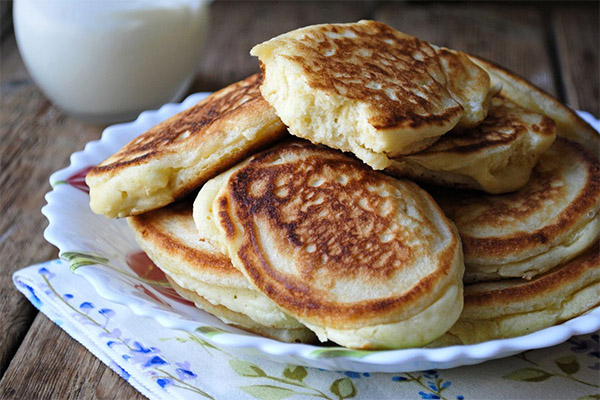
Preparation Ingredients:
- 300 ml of kefir 2.5% fat (if possible, it is better to take homemade kefir);
- 1.5 tbsp. sugar and salt;
- 0.5-1 tsp. soda;
- 1.5 cups of flour.
The process of kneading the dough:
- Preheat the fermented milk product or leave it on the kitchen table until it warms to room temperature.
- Pour the kefir in a deep container, add the baking soda and stir thoroughly (without lumps). Soda should not be carbonated, so it gets into an acidic environment and will give foam.
- Add sugar and a pinch of salt and stir again thoroughly. Add very little sugar - a tablespoon and a half. If a lot of sugar is added, the pancakes will quickly turn sour. The flapjacks will become more or less fluffy, depending on how thick the dough is. It is desirable that it be thick.
- Add flour step by step. It is not necessary to knead it for a long time, just stir it, so that there are no lumps.
- Fry pancakes as soon as you knead the dough. Pour oil on a red-hot frying pan, set a medium heat. Spoon the batter onto the pan, leaving gaps between the pancakes. Fry until crispy crust.
Pancakes with milk and soda
Your attention is given a very easy recipe for cooking pancakes with milk and baking soda.
We will need:
- a glass of warm milk;
- half a glass of water to prevent the milk from sticking;
- one chicken egg;
- 0.5 tsp. salt;
- 0.5 tsp. baking soda;
- 2 tbsp. sugar;
- 8 tbsp. flour (you can add or vice versa if you like);
- 2 tbsp. vegetable oil;
- 0 5 tsp. citric acid.
Preparation process:
- In a deep bowl pour milk, egg, salt, water, sugar. If you like not quite sweet pancakes, then you need to put a little sugar. Pour the butter.
- Gradually add flour, previously mixed with citric acid and baking soda. Stir vigorously until the consistency of liquid sour cream.
- Bake in a heated pan until crispy.
An interesting way to bake without yeast with baking soda and vitamin C
If you want to bake baked goods without yeast, you can help, of course, baking soda, as well as vitamin C. For 2-3 tsp of baking soda, you will need 2-3 tsp of vitamin C. Mix all this, in such proportions completely add to the future dough, mix everything well and send it to the oven. The dough with such a composition will not rise at room temperature, and it will rise in the oven. Successful experiments to you!
Recipe for making universal fasting dough
To knead this magic dough you will need:
- water - half a cup;
- vegetable oil - half a cup;
- salt - a pinch;
- leavening agent - 1 tsp;
- flour - 2,5 cup.
Preparation:
- To begin, choose a cup of suitable size, pour into it vegetable oil, half a cup of hot water.
- Pour in salt, mix everything.
- Sift the flour with the baking powder. The amount of flour depends on the consistency of the dough you want to get, what kind of filling you want to use. If the filling will give (berries, fruits) juice, it is better to take 2.5 cups of flour. If the filling will be cheese or mushroom, which does not give much juice, you can add 2 cups of flour. Then the dough will not need to be rolled out, but only stretched lightly with your hands.
- Knead the dough. After that, cover it with polyethylene or a cup and leave it to "rest" for half an hour.
- After that, you can form it into products with any filling: sweet, salty, sour, with whatever you like. The dough is very pleasant to the touch and very easy to work with. You can roll it out into a very thin layer. What you can do with this dough is a matter of your imagination. You can make apple pie, plum pie, blackcurrant pie, cheese pie, or anything else you like.
Try making this dough, and this recipe is sure to become a favorite.
Apple pie with a crispy crust called charlotte
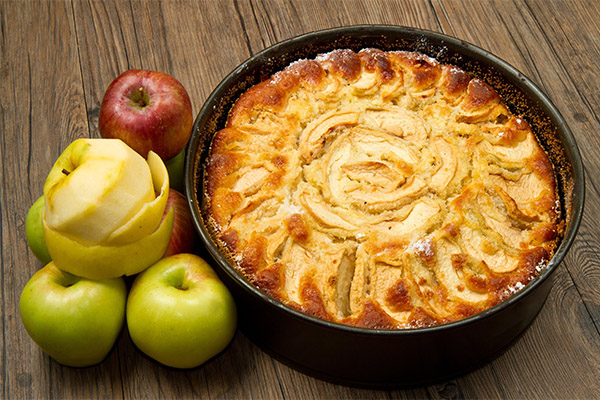
For the pie, we will need:
- 4 apples, peeled and coreless;
- 3 eggs;
- 0.5 teaspoon of baking soda;
- 1 cup sugar;
- 1/3 tsp. citric acid.
Process:
- Finely chop apples.
- Place eggs and sugar in blender bowl and beat until frothy. Pour in flour gradually and mix.
- Combine the dough with the apples, grease the cake pan with butter, sprinkle with semolina and pour the mixture into the pan, smoothing the surface.
- Place in the oven for 40 minutes at 182°C.
The pie is ready, very tasty and crispy. Try it!
Take for yourself these tips, recommendations, and recipes. And then you will be able to make gorgeous, hearty, warm baked goods with baking soda. Delight yourself and your family with culinary masterpieces!
«Important: All information on this site is provided solely for informational purposes. Consult with a health care professional before using any of our recommendations. specialist. Neither the editors nor the authors shall be liable for any possible harm caused by materials."

